Russula supplies water treatment plant in addition to the 600,000 ton/yr mill
In conjuntion with the turnkey supply of a 600,000 tpy bar and wire rod mill to Gerdau (formerly Silat), Russula supplied a water treatment plant. The plant was built on a 148 hectares greenfield site, located in the town of Primavera in Caucaia, 50 km from the northern Brazilian city Fortaleza. Russula provided all the water treatment plant equipment, including installation supervision, commissioning support and training.
Water Treatment Plant Layout
Common among most water treatment plants for the steel industry, one circuit is dedicated to the contact water and another to the non-contact water. The contact water circuit at the Gerdau plant has a volumetric flowrate of 2000 m3/hr and the non-contact water cirucit 850 m3/hr.
As the contact water circuit carries polluting materials that decrease the wear life of the rolling mill equipment, the main objectives of water treatment plants are to remove these materials and decrease the water temperature. Polluting materials are classified into sedimentary (scale and sludge) and non-sedimentary (oil and grease). The water treatment process is divided into four zones:
1) Large scale removal
2) Fine scale sedimentation and oil/grease elimination
3) Suspended fine scale removal
4) Temperature reduction
Water Treatment Plant Construction
The water treatment plant was one of the first areas of the new greenfield and wire rod mill to be constructed. Starting in September, 2013 with the site surveying the following photos show the construction progress of the water treatment plant over the span of ten months, ready for the bar mill commissioning in March, 2015.
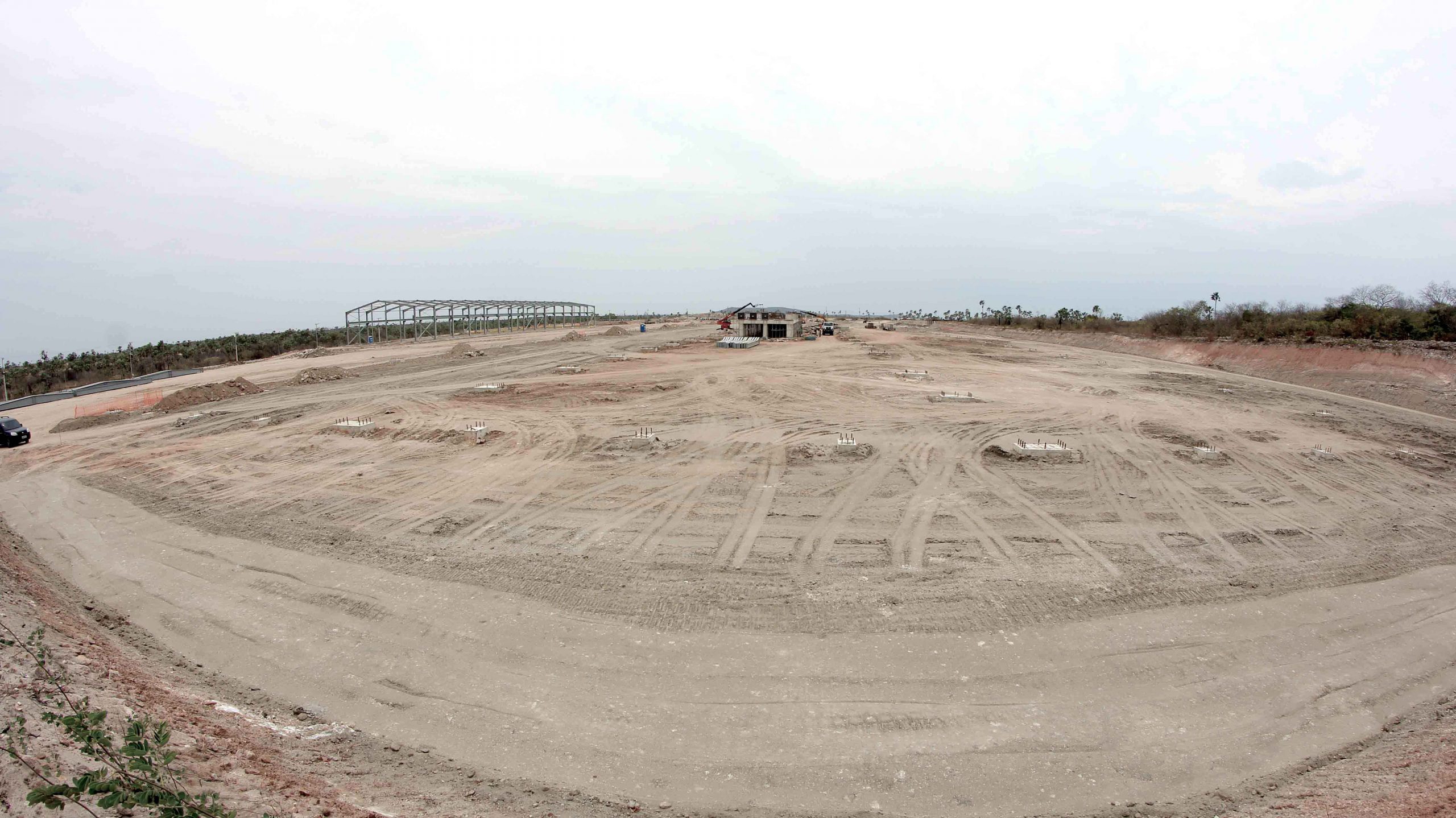
Greenfield construction site 600,000 tons/yr rolling mill
September, 2013
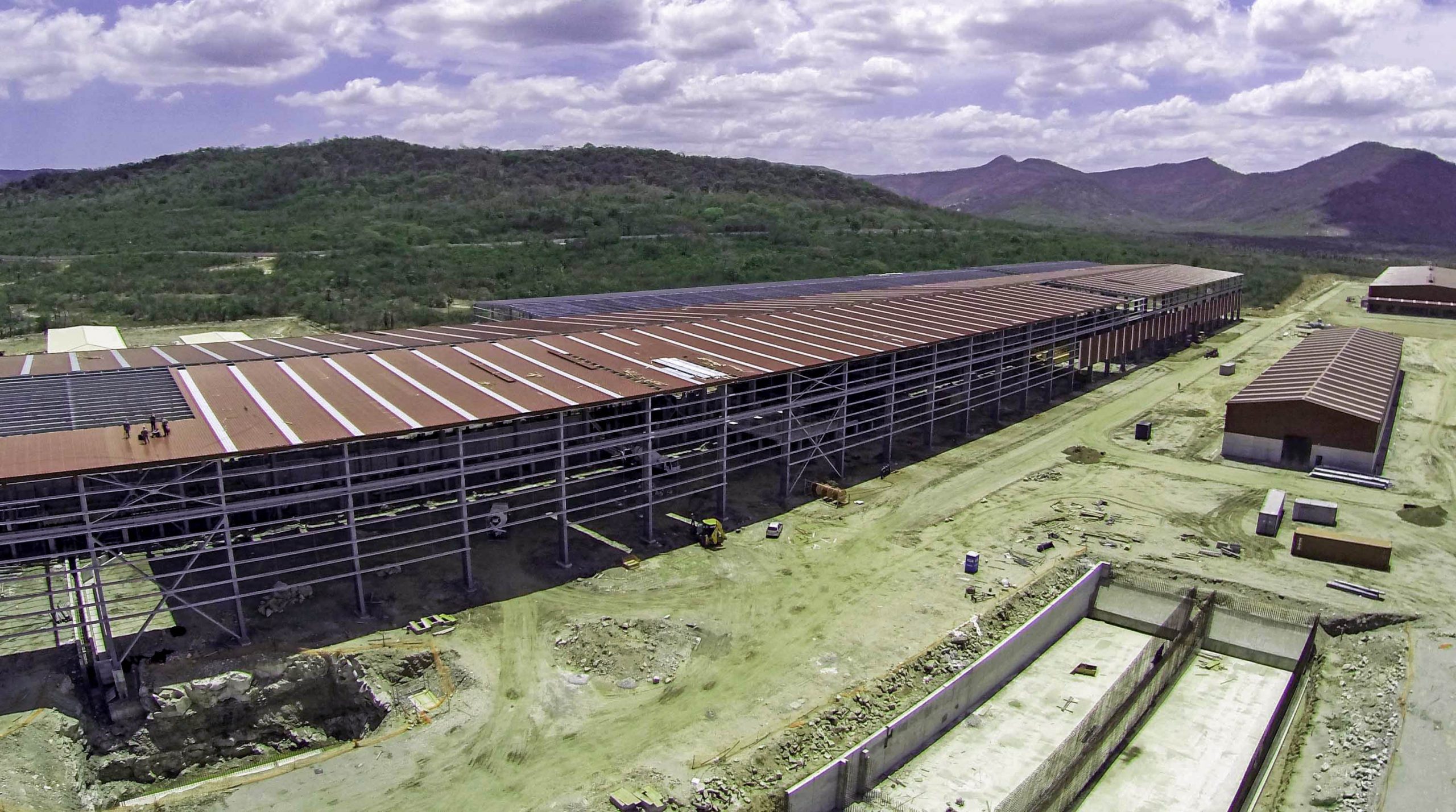
Drone shot of preliminary construction
January, 2014
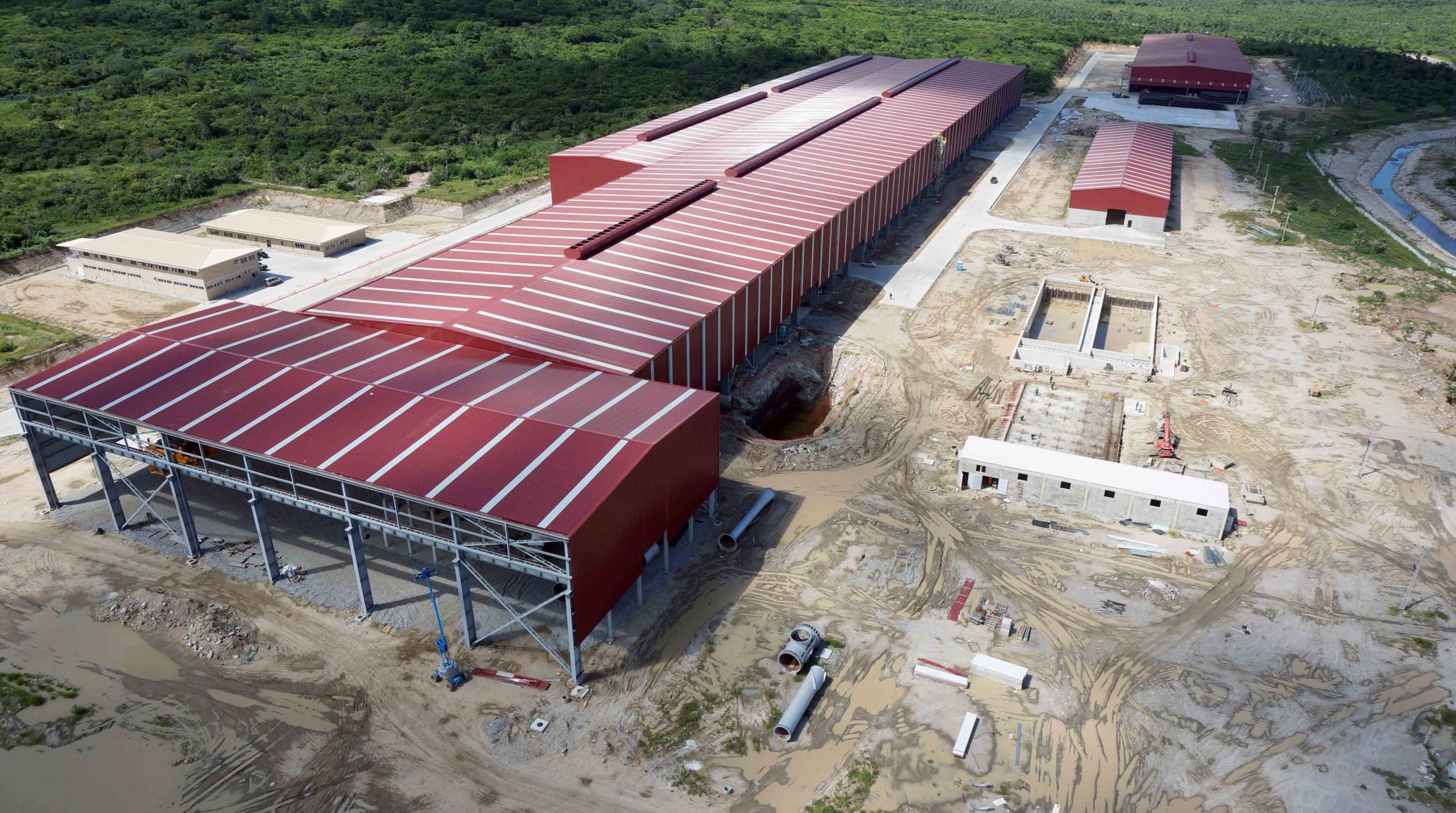
Drone shot 5 months later
May, 2014
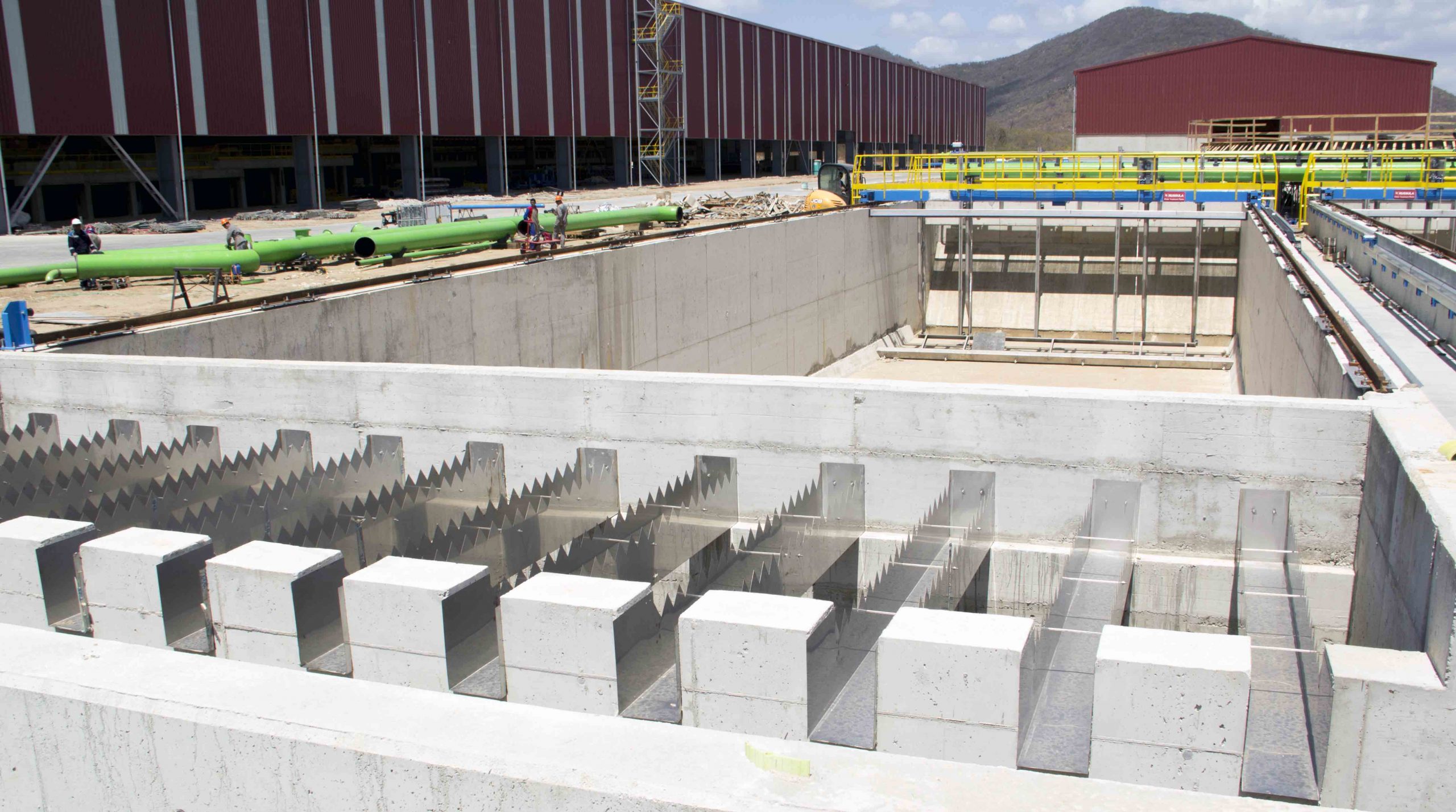
Ground shot of decanting basins
July, 2014
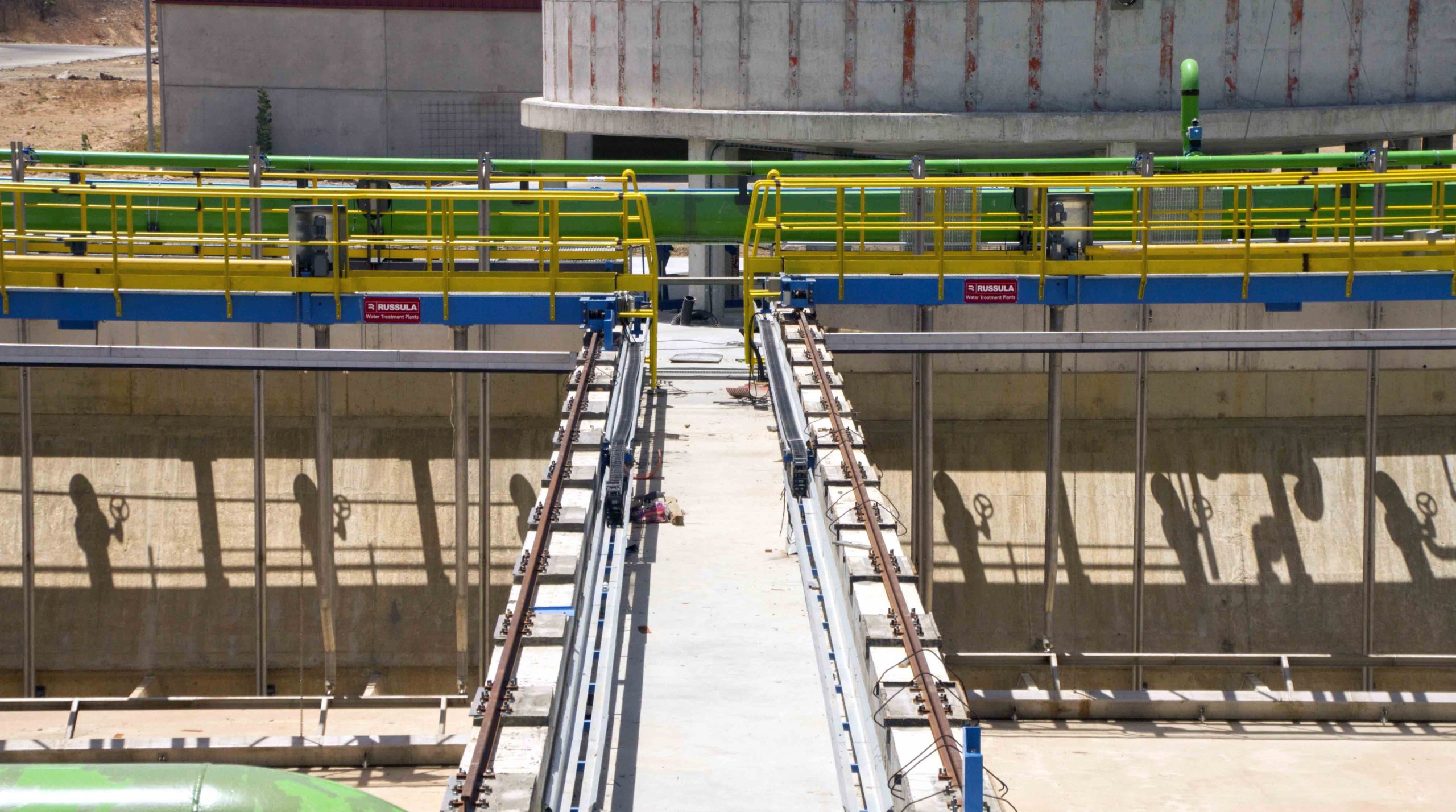
Decanting basins bridge scrapers
October, 2014
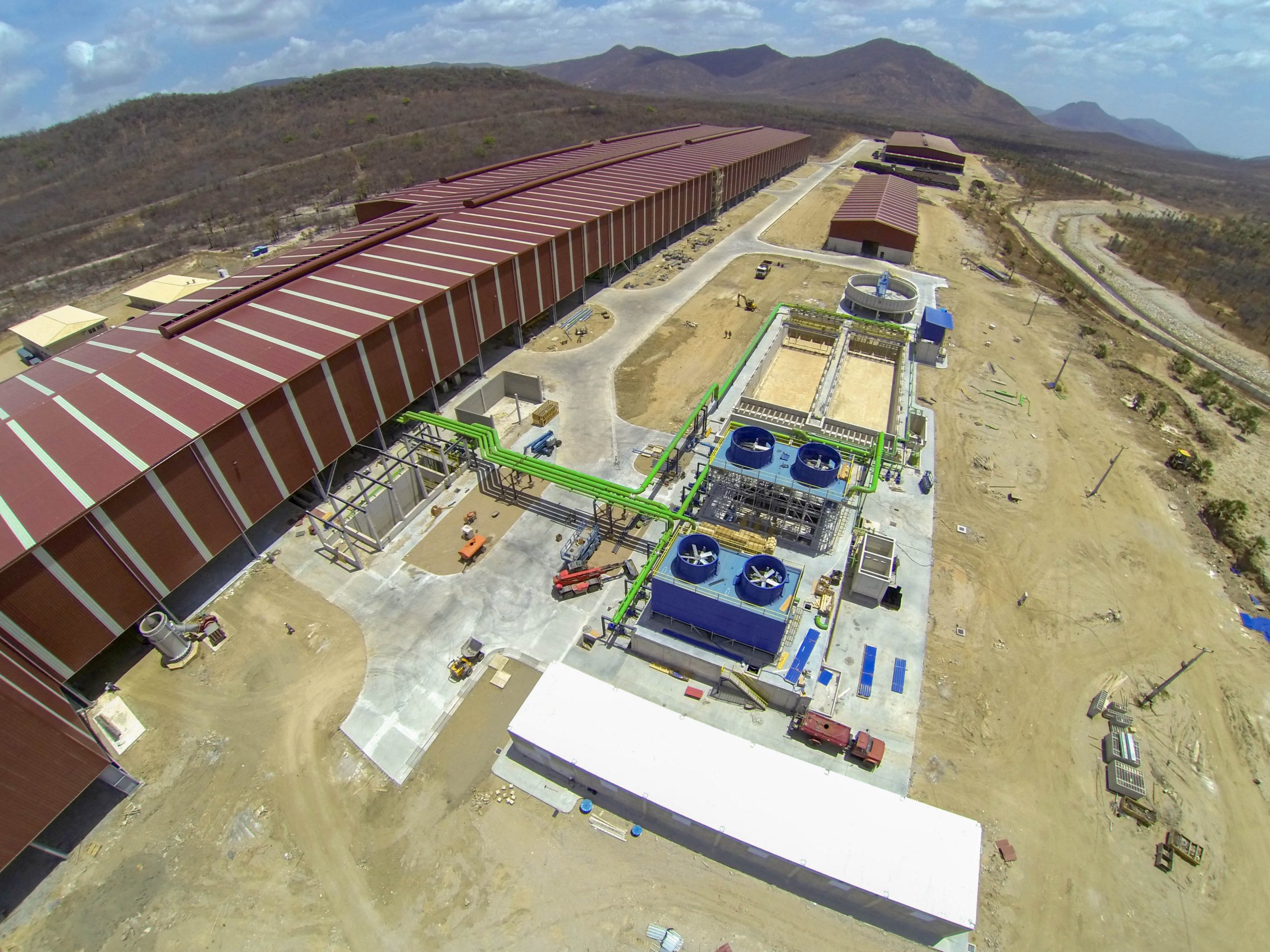
Drone shot ten months later from construction start
October, 2014
Reduction in Operational, Maintenance and Project Investment Costs
The Russula water treatment plant simplifies the civil engineering, construction, and occupies less space than conventional water treatment plants. This simplification yields two cost savings. First it lowers the total project investment including installation and equipment costs and second, over the long term, the Russula water treatment plant reduces the operational and maintenance costs. Due to a simplified, compact plant, fewer personnel are required to operate and maintain it.
